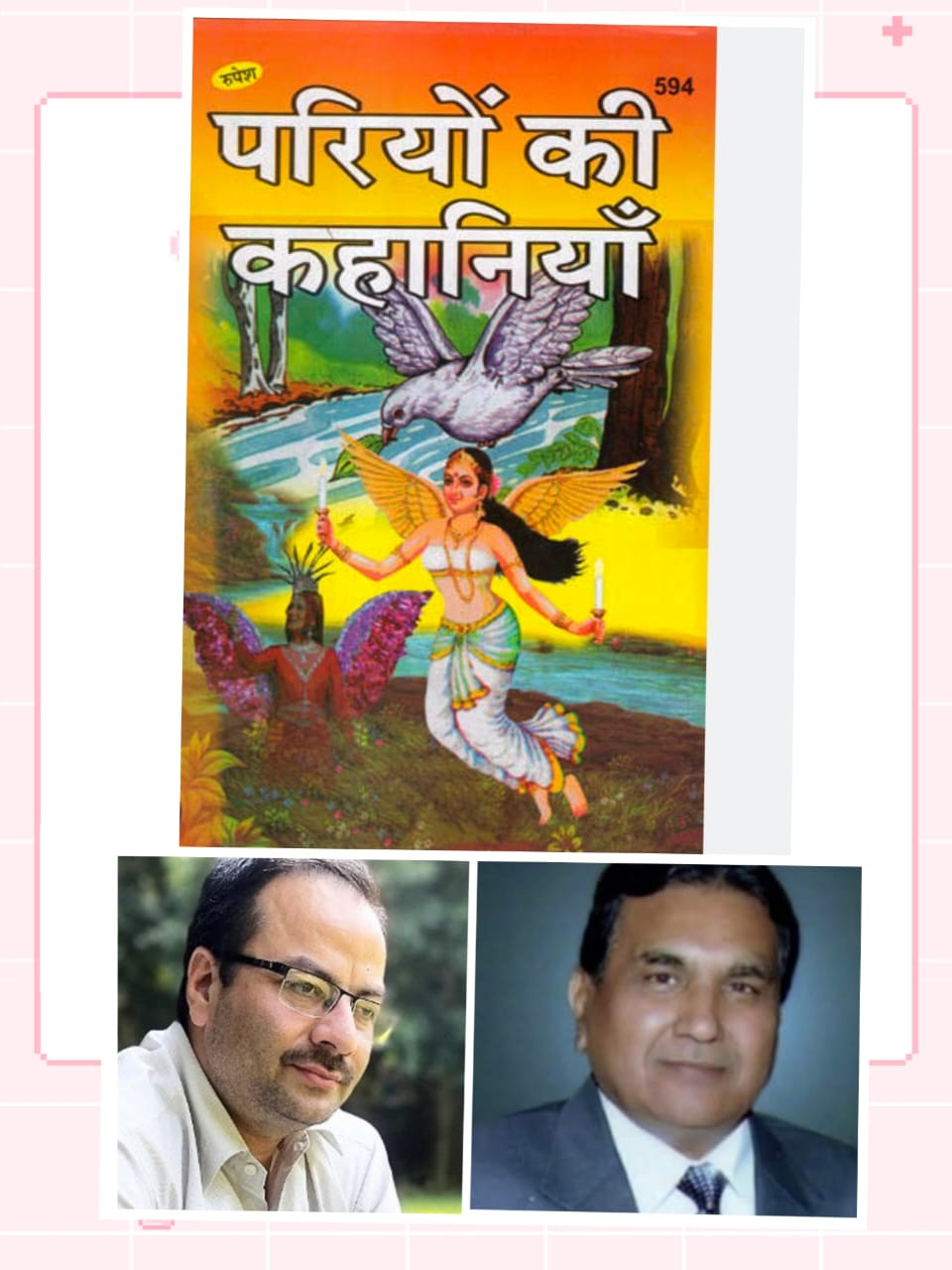
(Interview of Krishna Bihari Pathak, Lecturer, Hindaun City, by Dr. Prabhat Kumar Singhal)
Despite their limitations, fairy tales play an undeniable role in educating and nurturing young minds. During a two-day literature event organized in Nathdwara, Krishna Bihari Pathak, a lecturer from Hindaun City, shared his views on the relevance of fairy tales in children’s literature. He emphasized that fairy tales contribute significantly to vocabulary development, cognitive growth, cultural exchange, problem-solving skills, emotional resilience, logical reasoning, stress relief, and self-empowerment. The multidimensional world of fairy tales—filled with morality, humanity, and creativity—is essential and beneficial for children.
Pathak highlighted two key priorities for children’s literature: utility and engagement. Literature for children must support their cognitive, moral, social, creative, logical, emotional, and sensory development (utility) while simultaneously fostering entertainment, curiosity, and excitement (engagement). Without these elements, literature cannot effectively shape children into well-rounded individuals, nor can it sustain their interest.
According to Pathak, fairy tales are stories centered on characters like fairies, wizards, demons, kings, and queens. They often feature supernatural powers, magical worlds, and extraordinary events. He stressed that the presence of a “fairy” is not essential for a story to be classified as a fairy tale. Stories imbued with imagination and featuring characters endowed with supernatural abilities also fall under this genre. Historically, fairy tales began as oral traditions passed down through generations, evolving into folklore and legends.
Fairy tales serve as a gateway to imagination. Pathak argued that if stories lack imagination, their relevance diminishes in academic and intellectual disciplines. Imagination not only enriches storytelling but also fuels scientific innovation. Childhood, therefore, is an ideal stage to nurture creativity through engaging and imaginative stories.
Children first encounter this imaginative world through the tales narrated by their grandmothers—stories of magical creatures, talking animals, and enchanted forests. These narratives trigger their curiosity and expand their creative horizons. Fairy tales, filled with superhuman characters and magical feats, spark emotional and intellectual growth.
Fairy tales fall into two broad categories: astonishing tales and moral tales.
Moral fairy tales not only introduce children to challenges, aspirations, and emotions but also guide them in developing appropriate behavioral patterns. These stories foster empathy and teach conflict resolution, significantly impacting their overall growth and belief systems.
Fairy tales resonate across cultures and age groups, addressing universal themes like the battle between good and evil. They inspire values such as kindness, courage, compassion, and perseverance, while also stimulating children’s imagination. Fairy tales play a crucial role in connecting young minds to the world around them—both human and non-human—thereby nurturing sensitivity and emotional intelligence.
Pathak explained that fairy tales enrich vocabulary and introduce children to diverse concepts, spanning local and global perspectives. They expose young readers to new words, ideas, and cultural values, promoting cross-cultural understanding. Through this, children learn to navigate the complexities of language and develop a global outlook.
Fairy tales are often criticized for their unrealistic elements and detachment from real-life experiences. While some aspects may appear fantastical, their overall impact remains positive, providing foundational elements for children’s development. Imagination, Pathak argued, is not a diversion from reality but a tool to enrich it.
Fairy tales inspire a positive outlook and energy to face challenges. By depicting conflicts and their resolutions, these stories teach children the value of perseverance and resilience. They encourage young readers to envision possibilities beyond immediate limitations, fostering both optimism and creativity.
In conclusion, Pathak highlighted the timeless relevance of fairy tales. Their rich imaginative worlds, moral lessons, and cultural depth make them indispensable for children’s holistic development. As Albert Einstein aptly remarked, “If you want your children to be intelligent, read them fairy tales. If you want them to be more intelligent, read them more fairy tales.”